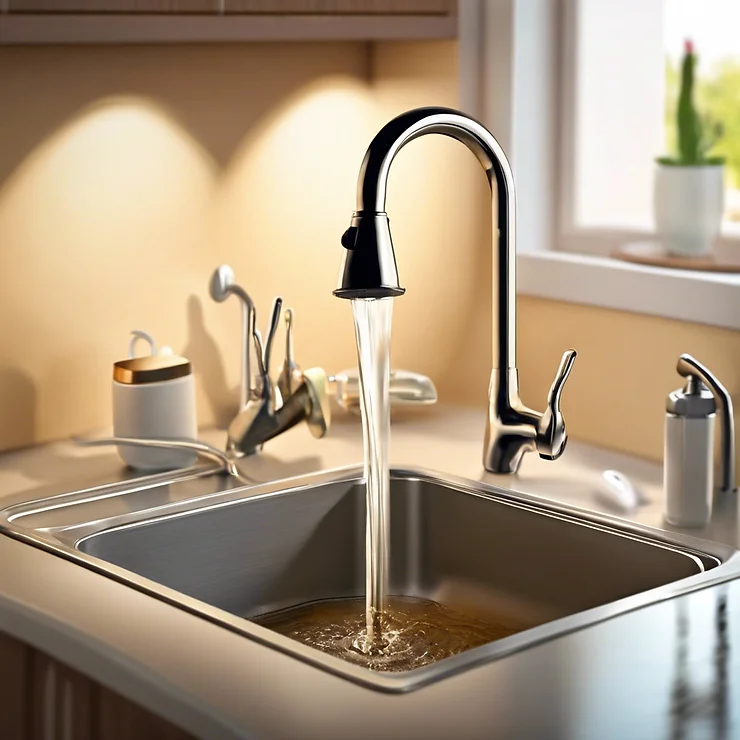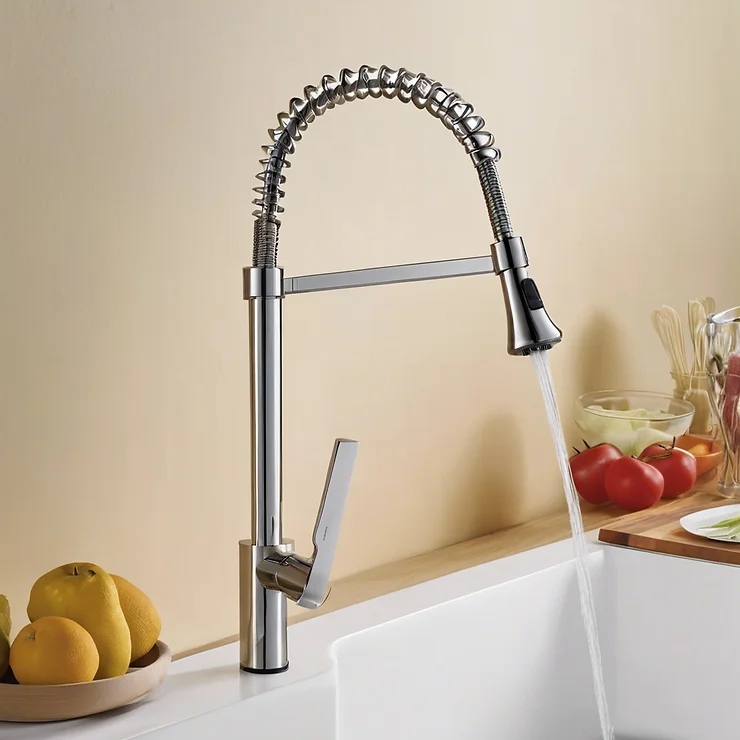Have you ever turned on the faucet and noticed that the water pressure in the kitchen sink is low? If yes, then you’re not alone because everybody has faced this common issue. The clogged aerators, faulty faucet cartridges, blocked pipes, valve Issues, and water supply line problems are the major issues of low water pressure in kitchen sink. This low water pressure also happens with the bathroom sink because all sinks have the same issues.
But I face this frustrating issue, and understanding the causes that help me to restore proper flow. In this blog, we have covered the common reasons behind low water pressure in the kitchen sink and provide tips on how to fix low water pressure in kitchen sink fixtures.

If you know the reason for the low water pressure in the kitchen sink, then you can fix it through our solution guide that we have provided in the blog with each problem. But if you don’t know the reasons behind the low water pressure, then you have to face the complete process.
| Cause | Percentage of cases |
| Clogged aerator | 35% |
| Faulty faucet cartridge | 25% |
| Blocked pipes | 20% |
| Valve issues | 15% |
| Water supply line problems | 5% |
Causes:
Contents
1. Clogged aerator
One of the most frequent causes of low water pressure in the kitchen sink is a clogged aerator. The aerator is the small screen at the tip of your faucet that helps control water flow and conserve water. Over time, mineral deposits and debris accumulate, leading to a reduction in water pressure.
Solution: Remove the aerator and soak it in vinegar to dissolve the minerals. If necessary, replace the aerator with a new one.
2. Faulty faucet cartridge
If the hot water pressure is low in the kitchen sink, a faulty faucet cartridge might be to blame. The cartridge controls the flow of water and can wear out, leading to low hot water pressure in the kitchen sink.
Solution: Replacing the faucet cartridge is usually straightforward. You can do that yourself and can contract with a plumber.
3. Blocked pipes
Another common culprit of low water pressure in the kitchen sink is blocked pipes. Over time, pipes can accumulate sediment, and rust, restricting the flow of water. This blockage can occur in either the hot or cold water lines, leading to low hot water pressure in the kitchen sink only.
Solution: If you suspect a blockage, it’s best to contact a plumber who can diagnose and clear the blockage using specialized tools.
4. Water supply issues
Sometimes, the issue isn’t with your sink at all but with the overall water supply. If the water pressure in the kitchen sink coincides with low pressure throughout your home, there is a problem with the municipal water supply or your home’s main water line.
Solution: Check with your local water provider to see if there are any ongoing issues. If the problem persists, a plumber can inspect your main water line.
5. Leaking pipes
Leaks in your plumbing system can also lead to low water pressure in the kitchen sink. Even a small leak can significantly reduce water pressure, especially if it occurs close to the kitchen sink.
Solution: Inspect the pipes under your sink for any signs of leaks, such as water stains or puddles. If you find a leak, it’s important to repair it promptly to prevent further damage.
6. Pressure regulator malfunction
Homes with a pressure regulator may experience low water pressure in the kitchen sink if the regulator is malfunctioning. The pressure regulator controls the water pressure entering your home, and if it’s not working correctly, you may notice a pressure drop.
Solution: A malfunctioning pressure regulator usually requires replacement, which should be done by a professional plumber.
How to fix low water pressure in the kitchen sink?
Now there are a few steps to fixing issues of low water pressure in the kitchen sink:
- Cleaning or replacing a clogged aerator that often restore water pressure.
- If your hot water pressure is low in the kitchen sink, try replacing the faucet cartridge.
- Inspect your pipes for leaks and repair where you find them.
- If you suspect blocked pipes, then clean them.
Note: Sometimes our major issue remains the low water pressure from our water-providing company.
Conclusion:
Dealing with low water pressure in the kitchen sink is annoying, but with the right steps, you can figure out what’s wrong and fix it. Whether it’s a blocked part in the faucet, a broken piece, or something more complicated, knowing what causes low water pressure in the kitchen sink is the first step to getting the water flowing right again. If you’ve tried some fixes and still notice that the water pressure in the kitchen faucet is low, then you move to the sink fixer.

